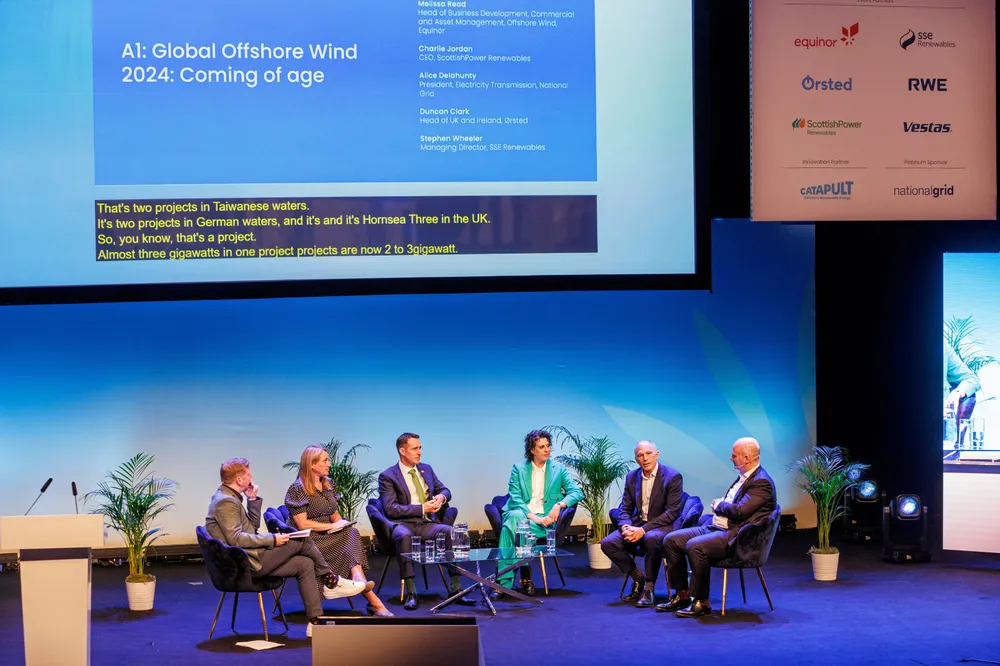Should the UK scrap offshore wind auctions? Industry chiefs debate 'stick of dynamite' issue
Government decision to set strike price for power too low last year raises questions for future, panelists say

Still sore from the disastrous last edition of the UK’s renewables auction, a panel at RenewableUK’s Global Offshore Wind summit mulled whether the country would be better off without the “theatre” of the annual event and if it should be scrapped entirely.
The UK’s annual round, underpinned by its Contracts for Difference mechanism, has helped propel it to being a global leader in offshore wind, with almost 15GW of capacity online.
Speaking on a panel at Global Offshore Wind conference being held in Manchester, RenewableUK CEO Dan McGrail raised the question, which he said was akin to “throwing a stick of dynamite on the table”, of whether the UK should ditch the auction system altogether for offshore wind.
“I think that’s an option,” said Duncan Clark, head of the UK and Ireland at Danish renewables giant Orsted. “I like the suggestion of a different way of allocating.
“It’s not the only way but it’s definitely one of the ways to create that line of sight on orders.
“Line of sight is certainty. Certainty is lower risk. Lower risk is lower cost of capital.”
The best thing governments can do is he said to “give supply chains that certainty.”
‘AR6 unlikely to deliver numbers we need’
Stephen Wheeler, managing director of SSE Renewables, said there should be “candid conversations” around the auctions.
“AR5 didn’t work,” he said, which means the UK now needs 20GW allocated between AR6 and AR7 to have a “realistic chance of hitting our 2030 targets.”
If AR6 does not deliver at least 10GW of capacity, he said there has to be a “really big auction, almost a mega-auction, to ensure we’re on track.”
“It’s about now tweaking the auctions to actually really reflect what’s happened in the current market.”
Strike prices aside, Wheeler said the UK could look at “setting capacity targets for the future auctions” that align with broader rollout targets.
“Almost take the theatre out of it,” added McGrail. “Six, seven gigawatts a year. Away we go.”
Difficulties ‘stitching together PPAs’
If AR6 also fails to deliver, the question was raised as to whether projects could go ahead under Power Purchase Agreements (PPAs) with private buyers.
“It is possible,” said Clark. “But it needs a set of circumstances and market conditions to make it possible.”
“Because we’re a massively capital intensive industry with long term investments. You need some level of certainty to support that funding. So that needs good counterparties for those contracts.”
Major utilities in some countries hand out long-term contracts, he said, while industrial demand is another route.
“What’s rare is getting and being able to stitch together gigawatts worth of those contracts in order to support one investment decision in a big piece of infrastructure,” he said. That is the “missing piece” in most cases.
Charlie Jordan, CEO of ScottishPower Renewables, said that if you look at the risks involved in a project and the risks of investing, “you’re just layering in other layers of uncertainty” by taking a private route.
“Whereas a government-backed CfD, if you’re looking at growth and economies of scale, is I think one of the most effective ways to do it.”
Wheeler stressed that “it’s not a case of one or the other,” when it comes to public or private. “The reality is we need both.”
In the past, it was more common to see PPAs for onshore wind projects, he said. But the market is “really evolving and maturing in that regard” and it is he said now not uncommon to see big PPAs in offshore too.
If AR6 isn’t big enough, McGrail said the question is really whether there is “hope” that the “market will come forward. I suppose there is probably a glimmer.”
(Copyright)